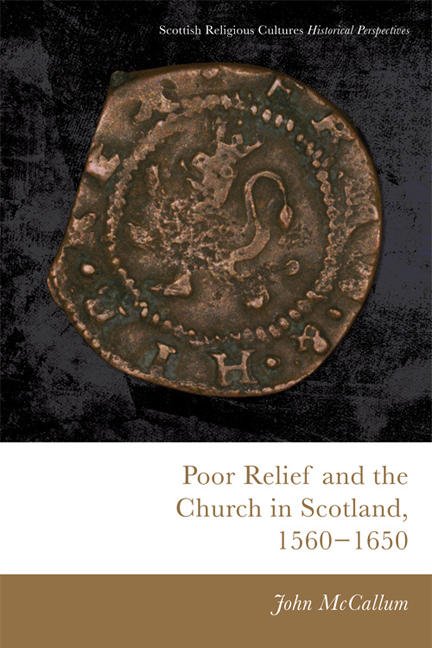Book contents
- Frontmatter
- Contents
- List of Tables
- Acknowledgements
- Conventions
- Abbreviations
- Map of Key Locations Mentioned
- Introduction
- 1 Ideas, Attitudes and Ambitions
- Part I The Development of Kirk Session Poor Relief
- Part II The Nature of Kirk Session Poor Relief
- 5 The Mechanics of Relief
- 6 Who Were the Poor? The Recipients of Relief
- 7 Who Was Deserving? Decision-making and Discrimination
- 8 Beyond the Kirk Session: Mixed Economies of Relief
- Conclusion
- Appendix Equivalent Values from Wages and Prices
- Bibliography
- Index
6 - Who Were the Poor? The Recipients of Relief
from Part II - The Nature of Kirk Session Poor Relief
Published online by Cambridge University Press: 14 September 2018
- Frontmatter
- Contents
- List of Tables
- Acknowledgements
- Conventions
- Abbreviations
- Map of Key Locations Mentioned
- Introduction
- 1 Ideas, Attitudes and Ambitions
- Part I The Development of Kirk Session Poor Relief
- Part II The Nature of Kirk Session Poor Relief
- 5 The Mechanics of Relief
- 6 Who Were the Poor? The Recipients of Relief
- 7 Who Was Deserving? Decision-making and Discrimination
- 8 Beyond the Kirk Session: Mixed Economies of Relief
- Conclusion
- Appendix Equivalent Values from Wages and Prices
- Bibliography
- Index
Summary
Introduction
Who were the beneficiaries of the poor relief devised and managed by the kirk sessions of lowland Scotland? As an inevitable consequence of the wider neglect of post-Reformation Scottish welfare, this question has scarcely been asked by historians. The distributions made have received even less considered attention than kirk sessions’ collections, with some ecclesiastical histories offering at least brief evaluation of collection totals but only anecdotal quoting of individual payments to recipients. But it is important that we develop a proper assessment of the pool of recipients not only so that the nature and impact of the welfare itself can be better understood, but also in order to understand more fully the kirk sessions’ aims and agenda. There are a number of (overlapping) issues to be considered here: gender patterns or variations in the distribution of relief, the social background or status of recipients, and also their physical and mental state, and age. It is not possible to produce a straightforward breakdown or prosopographical analysis of relief recipients, because we normally have little in the way of biographical details, or life stories behind the assistance provided. Often, all there is to go on is a series of names, meaning that, as is often the case, gender is the subject on which the evidence is clearest. Nevertheless, it is possible to draw some conclusions on the key trends, and one recurring finding is that there was considerable variation between parishes rather than a uniform pattern in the distribution of relief. Both the supply and the demand for poor relief was influenced by local factors and concerns. This complexity, while challenging for the historian, points to a localised and responsive ecosystem of relief. This chapter therefore offers analysis at the level of individual parishes, as to amalgamate statistics or proportions at a broader level would paper over the distinctiveness of local arrangements, and potentially offer misleading conclusions.
Most kirk sessions divided up their poor relief recipients into two types: regular and irregular, or ordinary and extraordinary. The regular or ordinary poor would receive payments at clearly defined intervals, often weekly or monthly, and there would be a formal list or roll of their names. Unfortunately, these have frequently not survived, because they were kept on separate sheets of paper rather than within the main minutes.
- Type
- Chapter
- Information
- Poor Relief and the Church in Scotland, 1560–1650 , pp. 167 - 186Publisher: Edinburgh University PressPrint publication year: 2017

